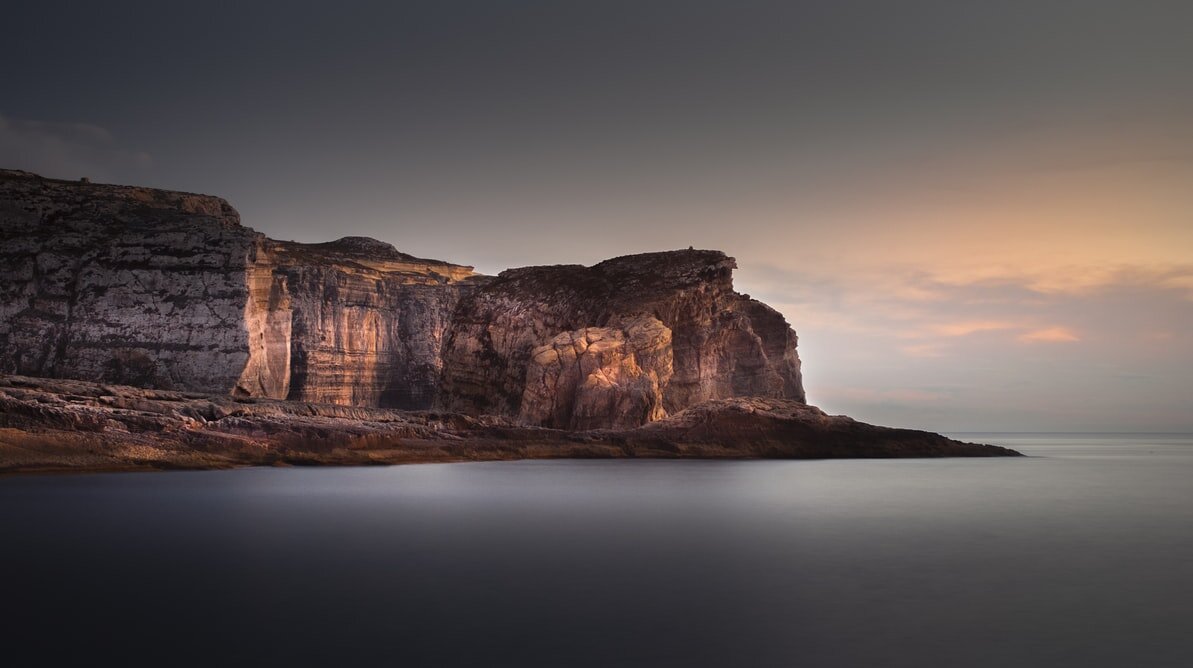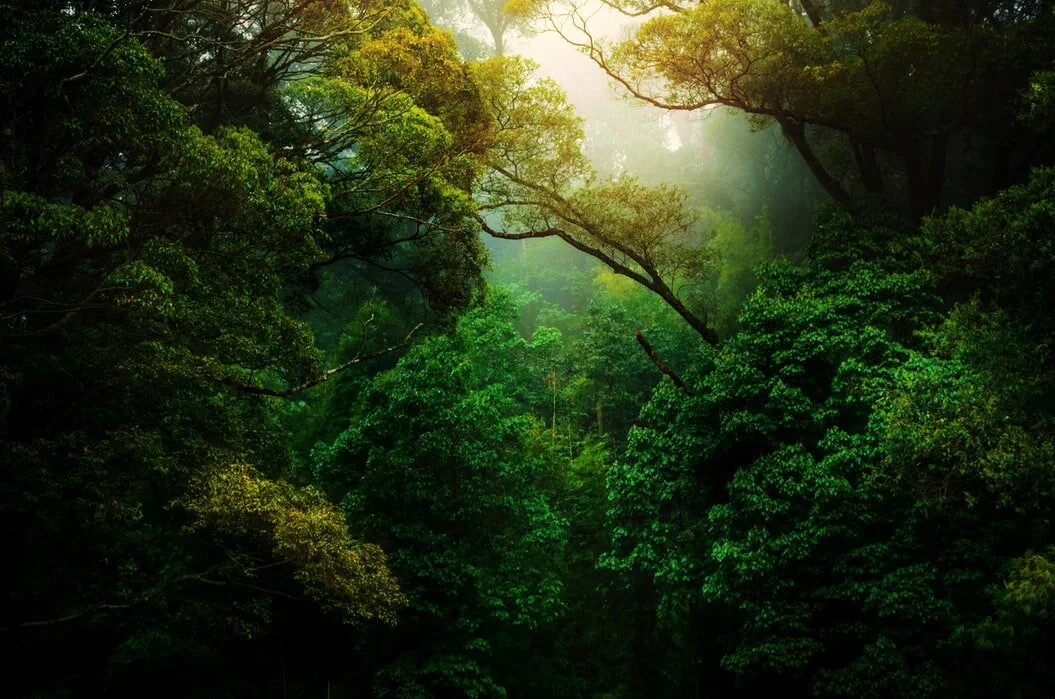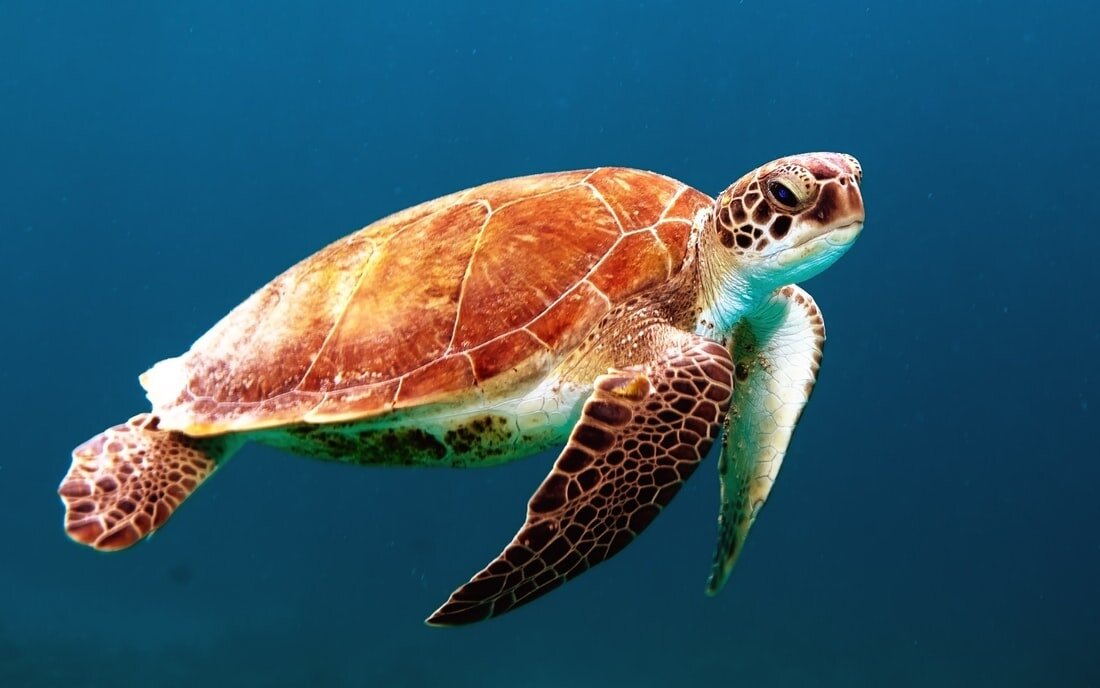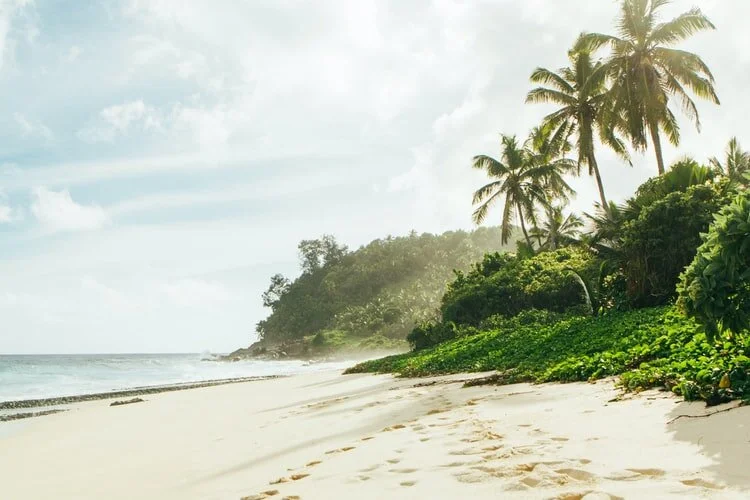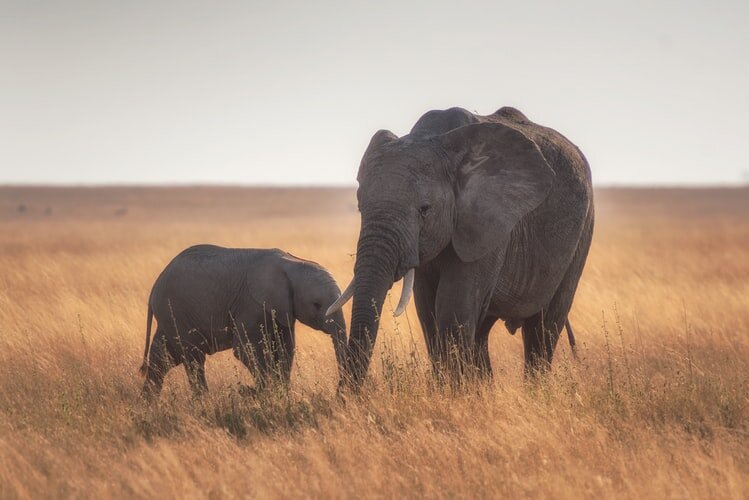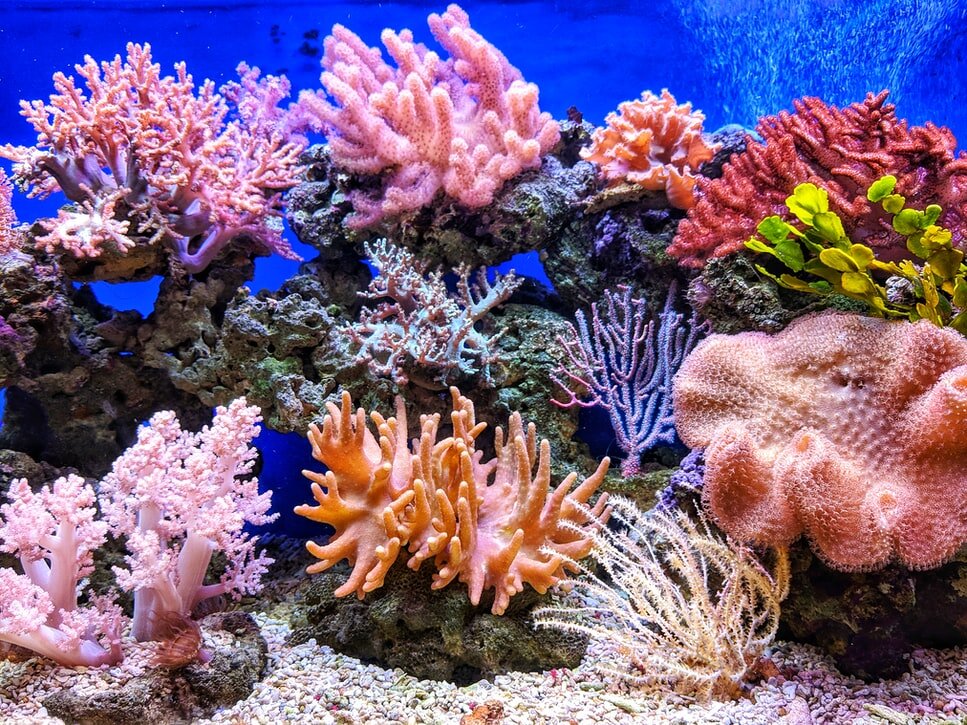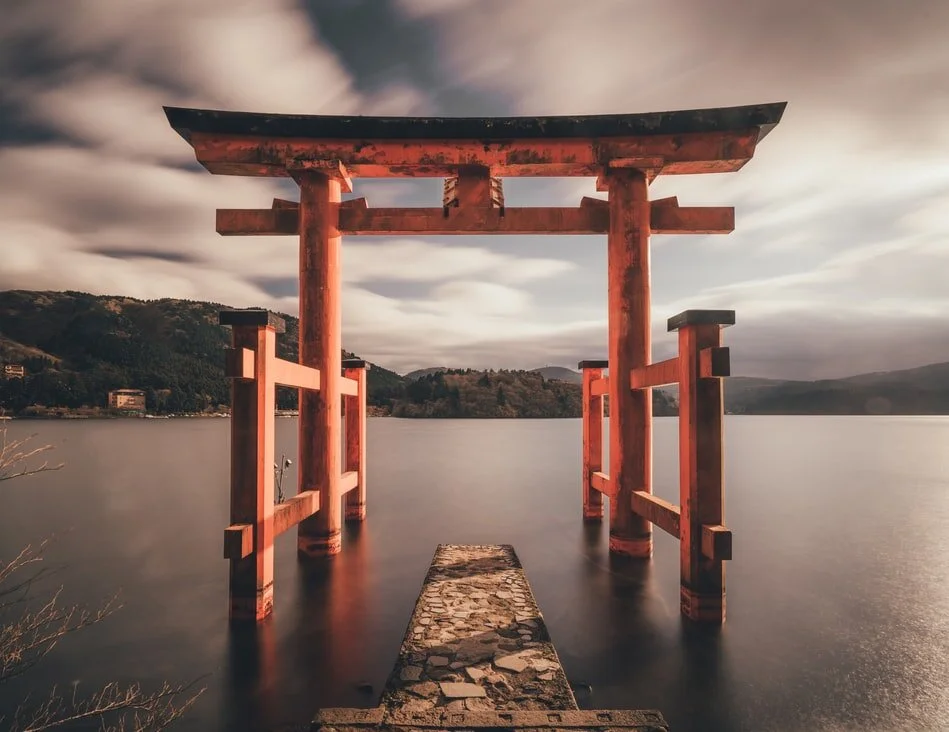For farming communities in East Africa, elephants pose a danger to survival. Consuming up to 1,000 lbs of food a day, they destroy farmers crops in hours, cause injury and even death. While poaching is publicized, it is actually the human-animal conflict that poses the greatest threat to the species survival.
Read MoreThis elephant is one of the many forced into long days of multiple rides for visitors in Thailand. UweBKK. CC BY-NC-SA 2.0.
The Dark Side of Elephant Rides
Most of us have had the opportunity to marvel at the world’s most gentle giants, elephants, whether in a zoo, at a circus, or maybe even on a safari. These animals are often used for human entertainment, but at what cost? For the elephants forced to carry humans for hours at a time, the cost may be their lives.
Elephant riding, a practice popular in places like Thailand, has become a regular bucket list item with influencers sparking inspiration atop the majestic animals. While it may seem that these animals are physically equipped, their bodies are simply not meant for such long hauls. In addition, the inadequate living conditions and harsh treatments they are subjected to are all the more reason to refuse elephant rides.
Their mistreatment starts with “phajaan,” or elephant crushing. This training method consists of taking the elephants from their mothers and confining them in a small space. When they are in captivity, they are beaten to submission with bullhooks and nail-spiked bamboo sticks. In combination with the physical abuse they have to endure, elephants are also deprived of sleep and food, then chained when they are not giving rides. By participating in elephant tours, one may unknowingly contribute to this brutal cycle of abuse.
Elephant in chains. Invisible Lens Photography. CC BY-NC-SA 2.0.
This physical abuse also leads to health complications for the elephants. Their bodies are weakened by the trauma, and the hundreds of pounds placed on the center of their spines often leads to permanent spinal injuries. Not only is the human weight an unnatural stress, but the chair, or “howdah,” attached to their backs can rub against their skin, causing open wounds that get infected. It is apparent that the consequences of elephant riding are incredibly harmful.
Some organizations have begun taking steps to remedy this issue. People for the Ethical Treatment of Animals and World Animal Protection created mass media campaigns denouncing elephant riding that have gained significant traction. These campaigns showed graphic images of elephants as young as 18 to 24 months old being chained up and beaten with bullhooks: a small glimpse into these animals’ harsh realities. Tour operators like STA Travel, TUI Group, G Adventures and Intrepid Travel have also contributed to ensuring animal safety with their elimination of most elephant activities.
Even though elephant riding may seem fun, the unethical practices behind it must be resolved in order to keep this endangered species alive and treated well.
Renee Richardson
Renee is currently an English student at The University of Georgia. She lives in Ellijay, Georgia, a small mountain town in the middle of Appalachia. A passionate writer, she is inspired often by her hikes along the Appalachian trail and her efforts to fight for equality across all spectrums. She hopes to further her passion as a writer into a flourishing career that positively impacts others.
Zimbabwe’s Mining Ban: A Potential Empty Promise?
The government of Zimbabwe now bans mining in its national parks, but environmentalists argue that the prohibition is hardly adequate.
An elephant at a watering hole in Zimbabwe’s Hwange National Park. BARMCD. CC BY-NC 2.0.
After mounting pressure from conservationists, Zimbabwe’s government has declared a mining ban in the country’s national parks. Reports have circulated that Chinese companies are scouting out coal mining sites in Hwange National Park, Zimbabwe’s largest national reserve. The park stretches over nearly 6,000 square miles and is home to about 50,000 of Zimbabwe’s estimated 86,000 elephants. Extensive conservation projects are conducted in the region to preserve its plethora of wildlife species, but the call to protect the elephant population has drawn the most intense focus.
The government’s new ban is the result of a case brought to the country’s High Court by the Zimbabwe Environmental Lawyers Association. The group argues that mining would destabilize the park’s biodiversity while injuring the fragile ecotourism sector. This case was first brought to the High Court after officials of Afrochine Energy and Zimbabwe Zhongxin Coal Mining Group were arrested for conducting illegal mining projects only to be released with special permission by Zimbabwe’s President. Outrage immediately ensued, and conservationists rode the wave of anger to action.
The immense pressure on the government to implement change follows months of anger by environmentalists claiming that Chinese mining companies have already caused catastrophic damage in other regions of Zimbabwe. Environmentalists explain that the companies dump toxic waste, clogging precious dams and resulting in substantial drops in local wildlife populations. Locals also resent the presence of Chinese mining companies due to diminishing livestock populations and disrupted irrigation routes.
Environmental groups also argue that mining will perpetuate the drought and overcrowding problems that have already killed hundreds of elephants. Local residents deal with regular poaching disputes and rely heavily on income from ecotourism; so, many fear that failure to hold off Chinese mining companies could cause economic damage and increased levels of conflict. Furthermore, many Zimbabweans believe that mining in Hwange is only one piece of the bigger picture. Gold and diamond mining sites pepper other parts of the nation, causing equal degrees of environmental destruction to the over 1,000 species of animals that roam the country.
Tusks removed from a poached elephant. Sokwanele. CC BY-NC-SA 2.0.
For now, it seems that the government of Zimbabwe has yielded to the demands of conservation groups, but environmentalists appear far from satisfied. The government says that it is canceling current mining titles, but conservationists are doubtful that this is enough. Shamiso Mtisi, deputy director of the Zimbabwe Environmental Lawyers Association, states that the group is demanding an interdict, which is a legally binding prohibition. Pressure on the government to act quickly increased significantly in the past week as 11 young elephants died due to an unknown bacterial infection. Investigations are now proceeding to determine the cause of the elephants’ deaths, and whether poisoning may be linked to nearby mining activity.
Although the High Court’s verdict is already known, but whether or not Zimbabwe’s government will take the necessary steps to save the country’s natural and economic resources remains a mystery.
Ella Nguyen
is an undergraduate student at Vassar College pursuing a degree in Hispanic Studies. She wants to assist in the field of immigration law and hopes to utilize Spanish in her future projects. In her free time she enjoys cooking, writing poetry, and learning about cosmetics.
Sunrise on the Serengeti. Hu Chen. Unsplash.
10 Travel Destinations Paving the Way in Sustainability
According to the United Nations, the global community must take drastic measures to alleviate the climate crisis. The Intergovernmental Panel on Climate Change, composed of nearly 1,300 scientists, predicts that global warming could increase worldwide temperatures up to 2.7 degrees Fahrenheit by 2040. This temperature rise will almost certainly exacerbate food insecurity, disease transmission, sea level rise and loss of ecosystems. From 2009 to 2013, international travel alone accounted for 8% of global greenhouse gas emissions. Roughly 1.4 billion people travel to a new destination each year, indirectly contributing to air pollution, land degradation and strained resources. These current levels of travel threaten the Paris Agreement, which proposes an annual 7.6% decrease in greenhouse gas emissions. Many countries have recognized the importance of environmental management and have striven for sustainability. From Malta to Japan, travel destinations are implementing eco-friendly practices, such as renewable energy and wildlife conservation. Travelers to these locations can explore pristine environments while positively impacting the planet.
1. Gozo, Malta
The coastline of Gozo, Malta. Zoltan Tasi. Unsplash.
Located in the Mediterranean Sea, the island of Gozo boasts a rich historical identity. Recognized by UNESCO, the Ggantija Temples are the world’s oldest free-standing structures, predating Stonehenge and the pyramids of Egypt. In addition to these historical sites, the island is relatively undeveloped, offering scenic hills and untouched coastlines. The European Environment Agency regularly monitors urban waste and pollution in coastal areas. According to their assessment, Maltese beaches rank among the cleanest in Europe. Within this pristine environment, common activities include swimming, snorkeling, deep-sea diving and kayaking. Gozo also hosts 85 endemic species of flora and fauna. To protect and preserve this unique landscape, the Ministry for Gozo established the Eco-Gozo Regional Development Directorate in 2009. Over the past decade, the island has become a model for sustainable development. Through renewable energy, green transportation and plastic reduction, Gozo is committed to reducing its carbon and water footprints. Ecologists have established protected spaces for endangered species, while local craftsmen sustainably restore ancient ruins like the Ggantija Temples. To further improve the standard of living in the Gozitan community, the island implements eco-education programs in schools and offers locally sourced, organic ingredients in restaurants. Named the Mediterranean’s Best Green Destination in 2018, this small island continues to gain recognition for its innovative conservation efforts.
2. Ljubljana, Slovenia
The Ljubljanica River, a pure water source in central Slovenia. Pedro Szekely. CC BY-SA 2.0
Known as “Slovenia’s Green City,” Ljubljana is the first European capital to establish a “zero-waste” initiative. The city currently recycles nearly 70% of its waste, reducing landfill trash to a mere 5%. Residual waste is processed into recyclable materials, solid fuels and high-quality gardening compost. Public green spaces, which include thousands of trees, comprise a third of the city’s territory and absorb carbon dioxide from the atmosphere. Visitors to Ljubljana can explore a variety of hiking trails, as well as an urban bee path that cares for 4,500 beehives. The city draws from the Ljubljanica River, which provides natural, non-processed drinking water and eliminates the need for plastic bottles. Since 2007, the historic city center has banned car traffic, allowing only bikes, pedestrians and electric trains. With fewer cars, the integrity of cultural and historical landmarks, like Preseren Square and Cobblers' Bridge, will be preserved for generations. In 2016, Ljubljana was deemed the “European Green Capital” and it plans to be zero-waste by 2035.
3. Azores, Portugal
The rugged cliffs of the Azores Islands in Portugal. Yves Alarie. Unsplash.
With nine volcanic islands, the archipelago of the Azores has diverse geological significance. The islands’ landscapes are dominated by craters, lagoons, waterfalls and lava fields. Visitors can hike among dense coastal forests, relax in natural hot springs and journey through dormant volcanoes. Azorean wildlife is varied and includes whales, dolphins, seals, bats and hedgehogs. However, rising sea temperatures spurred by climate change have driven aquatic species, such as the North Atlantic right whale, to near extinction. To protect the islands’ biodiversity, the Azores Islands harbor more than 60 marine protected areas which serve as sanctuaries for endangered species. Rather than burning fossil fuels, the Azores utilize geothermal power plants to harvest renewable energy from the earth’s subsurface. Geothermal power currently provides around 50% of the islands’ energy needs. Due to these sustainable developments, the Azores ranked among the world’s top 100 sustainable destinations in 2019.
4. Iwokrama Forest, Guyana
The dense foliage of the Iwokrama Forest. Kunal Shinde. Unsplash.
Named “The Green Heart of Guyana,” the Iwokrama Forest is one of the last pristine tropical forests in the world. For decades, global timber industries have exploited these natural ecosystems through deforestation, generating 18% of all greenhouse gas emissions. While tropical forests only occupy 7% of the Earth’s surface, they capture and store carbon naturally, with Iwokrama capturing over 1.4 million tons of carbon dioxide annually. In order to mitigate the loss of vital vegetation, Iwokrama employs a polycyclic harvesting system, resulting in the removal of less stems per acre and no significant gaps in the forest canopy. The Forest Stewardship Council has commended these forest management practices, which prioritize locals, wildlife and the natural environment. Amid lush forests, wetlands and savannas, visitors might encounter diverse wildlife such as jaguars, giant anteaters, black caimans and harpy eagles. While traversing the Iwokrama Canopy Walkway, a 500-foot series of suspension bridges, travelers can examine nearly 6,500 species of plants. In 2016, Guyana’s Environmental Protection Agency awarded the Iwokrama Forest with the Green Award for its exemplary environmental stewardship.
5. Galapagos National Park, Ecuador
A Galapagos sea turtle swimming off the coast. Wexor Tmg. Unsplash.
As a UNESCO World Heritage Site, the Galapagos National Park and surrounding waters are protected for conservation. The 19 islands boast distinct landscapes, ranging from barren volcanic rocks to green sand beaches formed by olivine crystals. The Galapagos are home to a variety of endemic species, including 15 mammals, 45 bird species and 79 types of fish. Due to wildlife sanctuaries and habitat restorations, vulnerable animals like tortoises, iguanas and sea lions live in harmony with humans. The Galapagos Islands also have a rich variety of endemic flora, with over 500 species discovered. When visiting the Galapagos, visitors are expected to act responsibly and treat the environment with respect. Common activities include snorkeling alongside sea turtles, hiking over dried lava beds and whale watching from kayaks. The Galapagos National Park is well maintained and protected by park rangers and volunteers, who partake in regular coastal cleanups. However, to ensure long-term sustainability, the islands offer outreach and education programs. Ecologists and environmental experts teach locals and visitors about the harmful effects of climate change and pollution in the hopes that this diverse landscape will endure for years to come.
6. Felicite Island, Seychelles
Felicite Island in the early morning. Nenad Radojčić. Unsplash.
Located in the Indian Ocean, Felicite Island contains parts of Ramos National Park and multiple marine protected areas. This small island community has multiple initiatives to conserve energy and invites visitors to share the responsibility of offsetting their carbon footprint. Drip irrigation has been introduced as a solution to water and energy waste. Widespread rainwater harvesting allows the use of rainwater for non-potable needs, such as washing clothes and watering gardens. Organic vegetable gardens support the ultimate aim of self-sustained food and beverages in the Seychelles. Special efforts are given to waste reduction, with zero-waste and plastic-free initiatives. Recently, island officials banned plastic bags, plates, cups and plastic foam boxes in order to mitigate ocean pollution. Additional conservation programs include a reforestation project, sea turtle monitoring and coral restoration. Within this pristine paradise, visitors can partake in snorkeling, diving and community outreach programs regarding climate change.
7. Serengeti National Park, Tanzania
Elephants, an endangered species, graze the Serengeti. Hu Chen. Unsplash.
Founded in 1951, Serengeti National Park houses one the highest concentrations of mammals in Africa, with species such as lions, giraffes and hippos. It is also known for the largest remaining unaltered animal migration in the world, with over 6 million zebras, gazelles and wildebeests stampeding over the fertile plains. At least four globally threatened or endangered species, such as elephants and cheetahs, thrive in these heavily-patrolled conservation areas. Guided safaris allow visitors to witness this diverse wildlife from a close proximity. Serengeti, however, is committed to sustainable visitation in order to protect the environment from irreversible damage. Human activity and waste disposal are closely monitored by park rangers. Conservation areas and secure breeding grounds also mitigate the impacts of deforestation, poaching and urbanization. Through such practices, Serengeti National Park allows wildlife to roam freely in their natural habitat, an increasingly rare commodity.
8. Republic of Palau
Coral reefs, an endangered ecosystem. Qui Nguyen. Unsplash.
Located in the western Pacific Ocean, the Republic of Palau includes over 200 volcanic and coral islands. Palau supports a diverse aquatic environment, inhabited by nearly 700 coral species and 1,400 fish species. Coral reefs protect coastlines from waves, provide wildlife with refuge and offer opportunities for recreation. Due to climate change, this vital ecosystem is severely threatened. The Coral Reef Research Foundation promotes water conservation, renewable energy and recycling to mitigate coral destruction. In 2018, Palau banned sunscreens that contain environmental pollutants and established marine sanctuaries in 80% of its territorial waters. Travelers to Palau must sign a pledge declaring that they will preserve and protect the island. While scuba diving, snorkeling and surfing, visitors must adhere to this pledge and respect wildlife.
9. Sun Moon Lake, Taiwan
Sun Moon Lake at sunset. Eddy Tsai. CC BY-SA 2.0
Residing in the foothills of Taiwan’s Central Mountain Range, Sun Moon Lake prides itself on maintaining a low carbon footprint. Public transportation routes have decreased the reliance on driving, thereby reducing the emission of greenhouse gases. Cable car systems, electric boats and cycling paths are common alternatives to cars at Sun Moon Lake. This rural region also hosts a range of dams which generate 62% of Taiwan's total hydroelectricity. Travelers to Sun Moon Lake can hike through dense forests, kayak in turquoise waters and interact with Indigenous people who live in the area. Thao natives, such as the Bunun, believe humans and Earth are intrinsically connected, opting to practice sustainable farming and fishing. Sun Moon Lake adheres to this philosophy and strives to protect the fragile environment.
10. Kamaishi, Japan
A traditional Japanese torii. Tianshu Liu. Unsplash.
Along the rugged Sanriku Coast, Kamaishi is an important fishing and industrial city. In 2011, a 45-foot tsunami swept through the city, devastating the local fishing industry and taking the lives of roughly 1,000 people. Amid ongoing reconstruction efforts, Kamaishi is prioritizing sustainability. Established two years after the tsunami, the Sanriku Fukko National Park consists of towering cliffs, unique stone formations and isolated coastlines. The Jodogahama and Kirikiri beaches, surrounded by vibrant green pine trees, host diverse marine ecosystems. Salmon, scallops, crabs and sea urchins are among the many aquatic animals that receive protections from overfishing. Through coastal cleanups, inland forestry conservation and river purification, Kamaishi strives to reduce the impact of industrial pollution. Forms of public transportation, such as electric trains and ride-shares, further mitigate car traffic and fossil fuels. Kamaishi is also a leader in renewable energy, relying on solar power and biomass fuel to power residential areas. Environmental organizations have commended Kamaishi for rebuilding a cleaner community in the wake of such a devastating natural disaster.
Shannon Moran
is a Journalism major at the University of Georgia, minoring in English and Spanish. As a fluent Spanish speaker, she is passionate about languages, cultural immersion, and human rights activism. She has visited seven countries and thirty states and hopes to continue traveling the world in pursuit of compelling stories.









